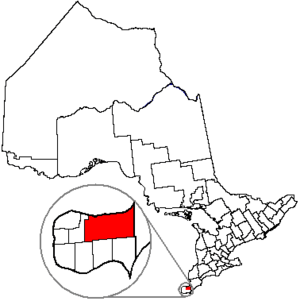John Freeman Walls Historic Site facts for kids
The John Freeman Walls Historic Site and Underground Railroad Museum is a special historical place. It covers about 20 acres (81,000 m²) and is located in Puce, which is now part of Lakeshore, Ontario. This is about 40 kilometers east of Windsor. Many of the original buildings are still there today. In 1985, this site became a museum about the Underground Railroad. It is also part of the African-Canadian Heritage Tour in Southern Ontario.
Contents
What Was the Underground Railroad?
The Underground Railroad was not a real railroad with trains. It was a secret network of safe routes and hiding places. These routes helped enslaved people escape from the Southern United States to freedom. They were like hidden paths through forests and brush. These paths helped people stay hidden until they reached a safe place.
The routes always went north. They led to free areas in the Northern United States, Ontario, Quebec, and New Brunswick. Along these routes, there were "stations." These were safe houses where people escaping slavery could rest. They would also be given food and clothing. People used the Underground Railroad even though there was a law called the Fugitive Slave Act of 1850. This law made it very risky for anyone to help enslaved people escape.
Why People Came to Ontario

In the mid-1800s, thousands of Black people escaped slavery in the United States. They came north to Ontario, Quebec, and New Brunswick using the Underground Railroad. Most of them arrived in Southwestern Ontario. They often crossed the Detroit River or the Niagara River.
After the Slavery Abolition Act 1833 was passed by the British Empire, more people escaping slavery came to Canada. By 1852, about 30,000 refugees had arrived. Local leaders became worried that it was hard for so many new people to find jobs. So, in 1846, church leaders started meeting to help. Later that year, the Refugee Home Society was created. This group helped people find land and settle.
The Story of John and Jane Walls
John Freeman Walls worked on a plantation in Rockingham County, North Carolina. He became good friends with Daniel Walls, the slave owner's son, and Daniel's wife, Jane King Walls. When Daniel was very sick, he freed John. He also asked John to take care of Jane and their children.
In 1845, John and Jane left their difficult life and escaped towards Detroit, Michigan. They were looking for a new beginning. The Walls family crossed Lake Erie on a steamboat called the Pearl. They arrived in Amherstburg, Ontario, in 1846. John and Jane were both against slavery. Their relationship was unusual for the time because John was Black and Jane was white. This sometimes caused people to stare.
When they arrived, they visited different settlements. They decided to live in the Puce settlement. The Refugee Home Society had recently bought land there to sell to people who had escaped slavery. John and Jane bought a 12-acre (4.9 ha) property. They settled at 859 East Puce Road in Puce, which is now known as Emeryville. They built a log cabin and eventually owned more than 200 acres (0.81 km²) of land. John was a carpenter. The Walls family had six children in Puce.
John and Jane held the first meetings of the Refugee Home Society in their own home. Jane taught Sunday School. John was a Deacon at the First Baptist Church. He even loaned the church money to buy land for a new log cabin church. The couple had many Quaker friends who helped people escape slavery. One famous Quaker was Levi Coffin from Cincinnati. He was known as the "President of The Underground Railroad" because he worked so hard against slavery.
The Walls family sent word of their safe home to a Quaker couple in Indiana. This couple had helped John and Jane get married on their journey to Ontario. The Walls' home became a final stop on the Underground Railroad. They welcomed many people who had escaped slavery. They helped them start new, free lives in southwestern Ontario. Jane even went back to the Southern United States twice. Each time, she returned with more people seeking freedom.
The Historic Site and Museum Today
The John Freeman Walls Historic Site was first recognized for its importance because of a book. Dr. Bryan E. Walls, a great-great-grandson of John and Jane, wrote a historical novel in 1976. The book was called The Road that Led to Somewhere. It told the story of the Walls family's journey and their role in the Underground Railroad.
The book made people interested in the Walls' story. So, in 1985, the John Freeman Walls Historic Site and Underground Railroad Museum opened. Today, it operates as a history museum. You can see Walls' original log cabin and the Walls' family cemetery. There is also the Historic Walkway, which is an overgrown trail. It helps visitors imagine what it was like for people escaping slavery to travel through nature.
The site also honors the modern Civil Rights Movement. There is a Peace Chapel built to honor Rosa Parks. Inside, there is a cross made from bricks from the Lorraine Motel in Memphis, Tennessee. This is where Martin Luther King Jr. was assassinated.
A historical plaque is on the site, which is still run by the Walls family. It does not receive money from the government. The Proverbs Heritage Organization manages the site as a non-profit group. It works closely with the Motown Historical Museum in Detroit, Michigan. For his work in Black History, Bryan Walls has received the Order of Canada and the Order of Ontario.
See Also


